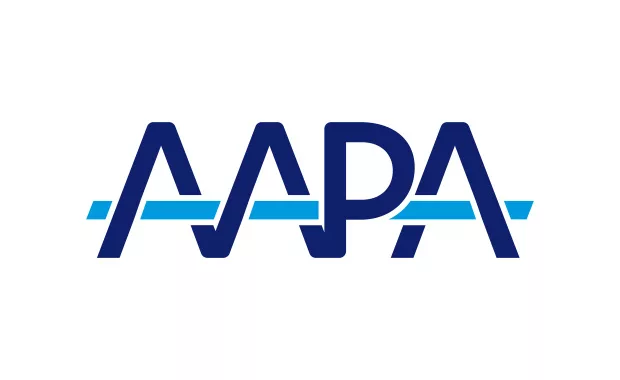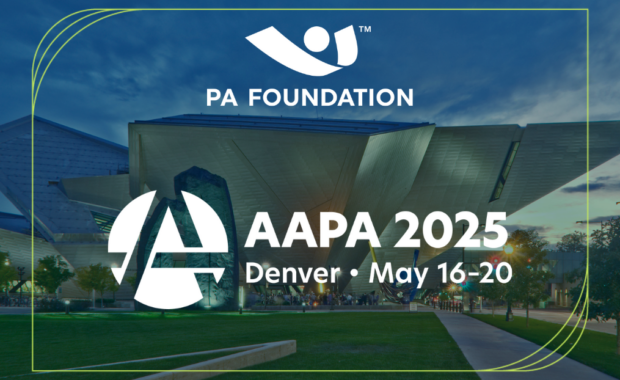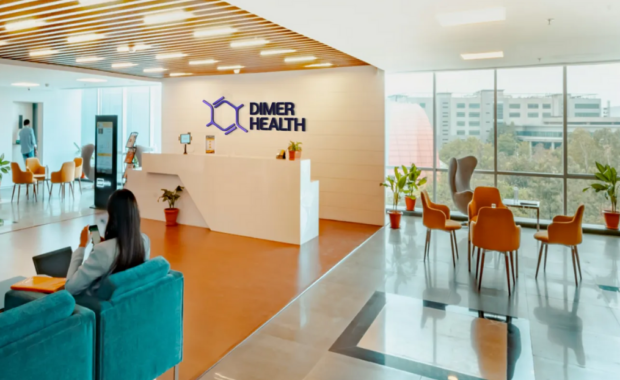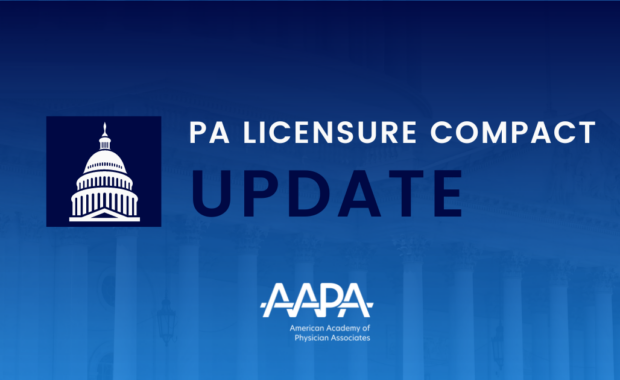The COVID-19 Chronicles: PA Shares Frontline Account
Hayden Mulligan, PA-C, Reflects During the First Months of the Pandemic
July 31, 2020
By Hayden Mulligan, PA-C
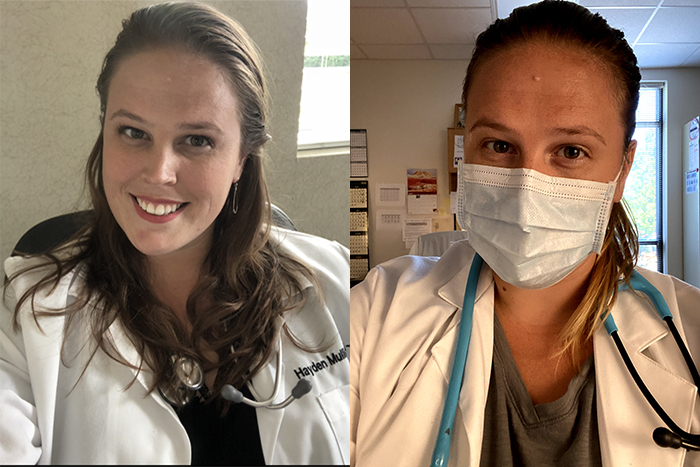
F. Hayden Mulligan, PA-C, practices family medicine at a Duke University primary care clinic in Mebane, North Carolina. As COVID-19 cases in the U.S. began to spike, Mulligan chronicled her experiences, her feelings, and her fears in real-time. She shares her account of the first weeks of the pandemic.
March 10, 2020
After finishing with my 10 a.m. patient, I found Hannah, our practice medical director, frozen in her chair. She looked up at me with fear in her eyes. “Italy’s morgues are full. People are being forced to keep their dead at home.” My mouth dropped open as my mind struggled to piece together an image of a reality that awful. When it couldn’t, it rationalized why it wouldn’t get that bad. Italy doesn’t have as many hospitals per capita, so maybe that’s a reason? With forewarning we have more time to prepare…right?
March 14, 2020
My inbox is flooded daily with COVID-19 emails from Duke, each bolded, unread message a tiny siren reminding me we’re under siege. Everyday there’s a change in guidelines. Eventually they blur together. Our days are full of scattered anxiety surges we just ride out, like this morning when Hannah came back from seeing a patient she was confident had COVID. Her voice crumpled to a whisper, “I hope this isn’t the last time I see her,” she said as she turned her face away, a tear rolling down her cheek.
Moments like these shake the ground we stand on, which is so unsteady to begin with, like an earthquake when you’re already standing in quicksand.
March 15, 2020
There’s talk of opening drive-through testing centers. It’s still taking five days to get the test results back and we’re only testing people with fever and cough. I’m worried the testing criteria are too restrictive, but I know we’re trying not to run out of PPE and tests. A local Target employee just tested positive so we’re bracing ourselves for a boom. We echo each other’s fears, finding comfort in our shared burden, but knowing all we can do is mentally prepare for it to worsen.
March 16, 2020
I was OK this morning. The fear comes in waves. By 5 p.m., the tide rolled back in with my first COVID-19 test. I felt claustrophobic in my hazmat suit, sweating in the exam room for 15 minutes while the flu test ran. When every second of exposure increases your chances of contracting a deadly virus, the time oozes by like molasses. Flu was negative, so I tested her for COVID while she coughed all over me. While removing my PPE, the edge of my face shield hit my shirt. I immediately changed into workout clothes I found in my car and our nurse manager sprayed my entire body down in Lysol. Overreaction? Probably. Would I do it differently? Nope.
March 17, 2020
Schools closed today.
March 18, 2020
More young people are being affected than anticipated. Another thread of comfort lost as my fabric of hopeful denial disintegrates. I texted my boyfriend today and explained I couldn’t see him. As hard as it is to get through this alone, I feel grateful for the solitude because it means I don’t have any loved ones to potentially infect at home. Other doctors are undressing in their garages, scrubbing their skin raw in the shower, and still keeping a distance.
March 19, 2020
A provider at a nearby Duke Primary Care office just tested positive. We share patients so we’ve likely been exposed already. Another COVID tentacle worms its way into our office orbit, tightening the noose.
We watch cases increase while supplies dwindle nationally, and all the CDC has to contribute is: “In a crisis, healthcare workers could use bandanas or scarves over their faces while treating patients, despite the fact that neither are proven to be effective.” For the first time in this pandemic, my sadness and anxiety gave way to fury.
Medical professionals are dutiful people. When called to the front lines, we WILL be there. But there is a SIGNIFICANT difference between our voluntary sacrifice and forced martyrdom. While we fight this pandemic, we dress ourselves in trash bags instead of armor. We’ve been abandoned to confront this nightmare alone.
March 20, 2020
Tonight, my older brother expressed his anxiety about food scarcity and the economy. I listened quietly, feeling both irritated and guilty for being irritated. He worries about the economy; every day I worry if today is the day I get COVID or pass it to a patient. I know he’s scared but I don’t have the emotional bandwidth to support him. I have to ration my emotional energy like he’s rationing toilet paper.
March 22, 2020
We just started tele-visits. The billing is a mess and the rules are unclear about who qualifies. Working through this pandemic is like trying to walk with vertigo – you can hardly take a step forward without feeling like you’re going to topple over. The effort to stay upright all day is so exhausting I get home and just go straight to bed. I keep hoping hedonic adaptation will kick in and I’ll adjust to this new norm, but nothing stays the same long enough.
March 23, 2020
Laura, my desk buddy and fellow provider, whacked me across the face with a news update before I managed to sit down at my desk. She called her friend, a cardiothoracic surgical resident in New York City, who said their heads of transplant and general surgery had both been placed on ventilators and an emergency department nurse had just been escalated to ECMO. Apparently, the hospital has developed an ethics committee to weigh the life contributions people have made to determine their worthiness for a vent because there aren’t enough to meet the demand.
I deflated into my chair. I can’t imagine what it’s like inside those walls for my New York brothers and sisters, their families, and the patients dying alone in isolation. Those shoved into the position to choose who lives and dies will do the best they can and then carry the burden of that responsibility forever. Their decisions are inevitably going to be dictated to them from “higher up” based on a set of criteria they may not agree with but are forced to execute. They will have to look a patient in the face and tell them that because of their higher likelihood of dying and estimated longer need for resources than someone else, they have been sentenced to death. In a few short weeks I could find myself deployed to a COVID unit in the hospital, involuntarily forced to play God. I don’t want that burden. I didn’t sign up for that. But it would be my duty if I found myself there. I keep praying that doesn’t happen, but then I feel ashamed. If it isn’t me, it’s someone else, and as a medical community, we carry this together.
I took a blank Advanced Directive form from my office to fill out at home.
March 24, 2020
I just need a hug! I’m physically isolated from everyone and emotionally isolated from non-medical people. Thank God for my work family. I started a tradition at lunch a couple weeks ago where everyone has to share three things they’re grateful for to help us cling to positivity. Sometimes it takes a while, but we all consistently say our families, our job, and each other.
Day after day, we face a firing squad hoping to avoid impact, and if we are hit, that it isn’t anything vital.
It’s probably time to call Mom.
Before the conversation started, I apologized to her, and then told her what I wanted if I died. It’s grim, and as a 30-year-old, a bit unsettling, but it’s enough of a possibility that to not have the conversation seemed irresponsible. Mom took it like a champ. I was proud of her.
I asked Hannah if she would advise my mom on my medical care if the time came, apologizing for being morbid. She’s apparently preparing too. We don’t talk about these things at the office but it’s comforting to know I’m not overreacting. We all have to acknowledge that we could die in the next few months. I spent the rest of the evening writing an email for my mom to reference:
- Cremate me and scatter me in Maine.
- No funeral or black clothing. Make it a life celebration and let my brother name it something cheeky.
- Play Amazing Grace.
- Supply lots of alcohol.
- Use my life insurance to go on a trip somewhere you couldn’t afford on your own.
March 25, 2020
I’m not sleeping. My jaw is sore from grinding my teeth through the nightmares of trailers filled with black body bags. I asked the other providers if they were having trouble sleeping. Apparently, we’re all having nightmares.
March 26, 2020
During lunch, we watched the Facebook video of Atlanta residents on their balconies applauding hospital workers at shift change. We all cried.
[PAs on the Front Lines: Alyssa Zantello Helps New York City During COVID-19]
March 27, 2020
I’m trying to sleep but there’s a group gathered at the courtyard firepit, which is supposed to be closed, loudly socializing and not six feet apart. I know it’s only 8:30 p.m., but I need every ounce of sleep I can get. And frankly, I resent them. Every day, I get up and put myself in danger. The only job they have is to socially distance and they can’t be bothered. It’s a slap in the face.
March 28, 2020
Today, I Zoomed with my cousins. I craved connection, but found myself unable to engage. I felt more isolated after that call than I did beforehand.
April 4, 2020
I’ve stopped caring what I put in my body. I ate at Cook Out – a fast-food restaurant – twice last week and slept all weekend. I’m so tired.
April 6, 2020
I texted Nikki today. She recently left the Duke CICU where she worked as an RN and moved back home to MA. The ICUs are all full in the Boston hospital where she works and they’re using 7/10 ECMO units.
April 7, 2020
Hannah called. Jasmine from our office tested positive and now five others are out for testing. Apparently the COVID test has a 40% false negative rate. Might as well just flip a coin. How many cases have we missed?
April 18, 2020
I just feel helpless. I’m worried I’m mismanaging patients with coughs because we have to funnel them through the COVID screening but they could have any number of issues, from allergies to a pulmonary embolism.
April 20, 2020
I dream of hugs, dates, coffee shops, CrossFit, bookstores, and walking into a grocery store without panic. I miss actually seeing someone smile, the luxury of not being an immediate threat to my loved ones, and not worrying I’m toting a miasma of deadly illness between exam rooms. I miss proximity without danger.
April 23, 2020
Every day I’m seeing and experiencing more people lashing out at healthcare workers. A patient said to me yesterday, “You doctors are on thin ice during this crisis. People aren’t happy with you.” What? We are risking ourselves and our families to fulfill our duty to our communities. How are we getting blamed for this pandemic or the state of the economy?
There were protests in Raleigh to end social distancing. A courageous nurse practitioner was there to counter-protest and she was harassed about her weight, threatened, and verbally abused. “Old people are going to die anyway” is not a valid reason to end social distancing, and if people had any idea what they were talking about, they’d realize COVID isn’t just affecting the elderly population. I’m disgusted and disappointed.
April 26, 2020
Hannah suddenly felt unwell this morning at work. Her voice shook when she said, “I don’t feel well.” She called employee health, scheduled a COVID test, and went home. I’ve been praying for her all day.
April 28, 2020
Hannah’s OK. Just a bug, thank God.
May 4, 2020
Murder hornets? You’ve got to be kidding me. It’s like apocalypse roulette.
May 7, 2020
74 days have passed since two white men chased and fatally shot 25-year-old Ahmaud Arbery in Georgia. It took 74 days, despite video evidence, for the two killers to be arrested for murdering an unarmed black man.
My heart is broken. My body is exhausted. And there’s still more than one sickness to battle.
July 2020: An Afterword
Hedonic adaptation has finally kicked in, and the day-to-day doesn’t feel so scary anymore. Everything in the office feels mostly back to normal – aside from mask-wearing all day, telemedicine visits sprinkled throughout our schedules, and obligatory shifts at Duke’s Respiratory Care Center (RCC). Between our drive-up testing centers and the RCC where we send COVID patients requiring in-person evaluation by a provider, we have decreased our daily exposure to possible COVID cases. While we’ve adjusted to a new norm, our stamina is lacking, gas lights flashing empty on our emotional and physical reserves. We still can’t sleep, hit a wall of exhaustion earlier in the day, and have a hell of a time word-finding. Any extra challenge these days feels like a mountain to climb, but we trade good and bad days and steadily move forward as a team. I’m grateful every day for the heroes I work with and our devotion to keeping each other upright.
Unfortunately, hedonic adaptation seemed to kick in for everyone else in North Carolina and people are milling about like the pandemic is over. It’s late July, and we have 118,100 confirmed cases and 1,889 COVID deaths in the state, with 1,724 new cases and 42 deaths just yesterday. Two months ago, on May 25, our weekly average for daily new cases was 697. That same day, George Floyd, a 46-year-old unarmed black man, was killed. Another victim in another death tally that shouldn’t exist. George Floyd. Breonna Taylor. Ahmaud Arbery. We honored him with eight minutes and 46 seconds of silence at our office and at the “White Coats for Black Lives” protest held in Durham. The main streets of Durham are covered with art devoted to the Black Lives Matter movement, coloring my morning runs through the deserted city with righteous demands for justice and peace. As of now, our case counts continue to rise but we keep moving forward with determination and hope.
Hayden Mulligan, PA-C, practices family medicine at a Duke University primary care clinic in Mebane, North Carolina. She can be reached at [email protected].
You May Also Like
AAPA COVID-19 Resource Center
How to Stay on Track in PA School During a Global Pandemic
US Army Reserve PAs Deployed to Assist in COVID-19 Response
Thank you for reading AAPA’s News Central
You have 2 articles left this month. Create a free account to read more stories, or become a member for more access to exclusive benefits! Already have an account? Log in.
